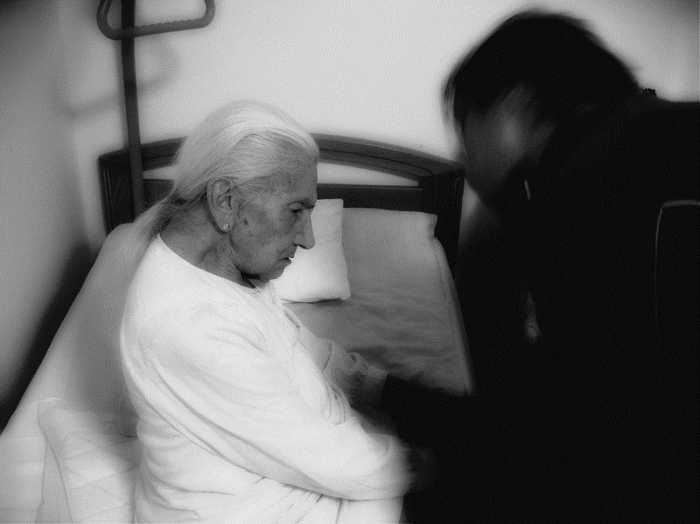What Is The Prostate?
The prostate is a small, walnut-shaped gland that is part of the male reproductive system. The prostate gland is located just below the bladder and in front of the rectum.
The prostate produces a fluid that makes up a portion of semen. The prostate also helps to transport and store seminal fluid. The gland surrounds the urethra, the tube that carries urine from the bladder to the penis.

What Is Prostatitis?
Prostatitis is a condition that can cause pain and inflammation in the prostate gland. Prostatitis can develop when the prostate becomes infected with bacteria. This can happen if bacteria from the urinary tract or other areas of the body spread to the prostate.
Prostatitis can be acute, meaning it comes on suddenly and lasts for a short time, or chronic prostatitis, meaning it develops over time and can last for months or even years.
Types Of Prostatitis
Though prostatitis can be broadly classified into four types – acute bacterial prostatitis, chronic bacterial prostatitis, chronic prostatitis/chronic pelvic pain syndrome, and asymptomatic inflammatory prostatitis.
Doctors may further categorize the condition depending on the patient’s age, symptoms, and how long he has been suffering from the condition.
1.Acute Bacterial Prostatitis
Acute bacterial prostatitis is a bacterial infection of the prostate that can cause urinary tract symptoms such as frequency, urgency, and dysuria.
Acute bacterial prostatitis is a potentially serious condition that should be treated with antibiotics.
2. Chronic Bacterial Prostatitis
Chronic bacterial prostatitis (CBP) is a condition that accounts for approximately 2 percent of all cases of prostatitis. Prostatitis is an inflammation of the prostate that can be caused by an infection.
Chronic bacterial prostatitis is caused by a recurring infection of the prostate. The bacteria usually enter the prostate through the urethra, which is the tube that carries urine from the bladder out of the body.
Chronic bacterial prostatitis can be difficult to treat because the bacteria can hide in tiny spaces between cells and are therefore difficult to reach with antibiotics.
3. Chronic Prostatitis/Chronic Pelvic Pain Syndrome
Chronic prostatitis/chronic pelvic pain syndrome (CPPS) is a condition that affects both men and women. It is characterized by chronic pain in the pelvic region that is not caused by any underlying medical condition.
The precise cause of chronic pelvic pain syndrome is unknown, but it is thought to be due to a combination of factors, including muscle tension, inflammation, and psychological stress.
There is no cure for chronic pelvic pain syndrome (CPPS). However, there are treatments that can help to reduce pain and improve the quality of life. Treatment options for chronic pelvic pain syndrome include physical therapy, medication, and surgery.
4. Asymptomatic Inflammatory Prostatitis
Asymptomatic inflammatory prostatitis is a type of chronic prostatitis that does not cause any symptoms. However, inflammatory cells are present in the prostate tissue. This condition is also known as asymptomatic chronic inflammation of the prostate (ACIP).
ACIP is thought to occur when white blood cells enter the prostate in response to an infection or injury but are unable to clear the infection or injury. These white blood cells can cause inflammation and scarring of the prostate tissue. ACIP is a relatively common condition, especially in men over the age of 50.
It is important to note that ACIP does not cause any symptoms and does not affect sexual function or urination. Asymptomatic inflammatory prostatitis does not require treatment. However, if the condition is causing pain or other symptoms, treatment options include physical therapy and medication.

Causes Of Prostatitis
The exact cause of prostatitis is unknown. However, the condition is thought to be caused by a combination of factors, including infections, inflammation, and psychological stress.
1. Infections
Bacterial infections are the most common cause of prostatitis. These infections can be spread through sexual contact, the use of contaminated needles, or exposure to bacteria in the environment.
2. Inflammation
Inflammation of the prostate can be caused by a number of factors, including infections, injuries, and autoimmune conditions.
Autoimmune conditions are conditions that occur when the body’s immune system mistakenly attacks healthy tissue. Prostatitis is thought to be caused by an autoimmune reaction in some cases.
3. Psychological Stress
Psychological stress is a known risk factor for chronic pain conditions, such as prostatitis. It is not clear how exactly stress contributes to the development of prostatitis, but it is thought that psychological stress can trigger or worsen the condition.
Symptoms Of Prostatitis
Symptoms of prostatitis vary depending on whether the condition is acute or chronic. Acute bacterial prostatitis symptoms are often fever, chills, and pain in the lower back and groin. Chronic bacterial prostatitis symptoms are often urinary frequency and urgency, pain in the lower abdomen and pelvis, erectile dysfunction, and prostate cancer.
Also, the symptoms of acute prostatitis can vary depending on the underlying cause. However, the most common symptoms are:
1. Pain
Pain can be felt in the pelvis, groin, or lower back. Other symptoms of chronic/acute prostatitis include urinary problems, sexual dysfunction, and fatigue.
2. Urinary Problems
Urinary problems are the second most common symptom of prostatitis. These problems can include difficulty urinating, a weak stream of urine, and the need to urinate more frequently.
3. Sexual Dysfunction
Sexual dysfunction is a common symptom of prostatitis. Men with prostatitis may experience erectile dysfunction, ejaculatory pain, and reduced libido.
4. Fatigue
Fatigue is a general feeling of tiredness that can be caused by a number of conditions, including acute bacterial prostatitis. Fatigue is often accompanied by other symptoms, such as pain and difficulty concentrating.

How Is Prostatitis Diagnosed?
A medical professional can assess the presence of prostatitis through the following:
1. Medical Tests
In some instances, the health professional might recommend urologists to men specializing in men’s urinary system and reproductive health. Urologists can diagnose urinary tract disorders associated with prostatitis using a variety of diagnostic tests. Some doctors perform urine syringas. Urinalysis involves measuring urine.
2. Physical Examination
Prostatitis can usually be diagnosed by performing physical exams. Usually in medical exams digital rectal exam is an examination of the prostate. . A health care professional performs a digital rectal exam during a medical appointment.
3. Personal And Family Medical History
It is important to get medical information from patients before they can diagnose prostatitis.
Treatment For Prostatitis
There is no one-size-fits-all treatment for prostatitis. The best course of treatment will depend on the underlying cause of the condition.
1. Bacterial Infections
Bacterial infections are typically treated with antibiotics. In some cases, surgery may be necessary to remove infected tissue.
2. Autoimmune Conditions
Autoimmune conditions are usually treated with immunosuppressive medications like nonsteroidal anti-inflammatory drugs. These medications work by suppressing the immune system, which can help to reduce inflammation and pain.
3. Psychological Stress
Psychological stress can be managed with stress-reduction techniques, such as relaxation therapy, meditation, and yoga. In some cases, medication may also be necessary to manage stress.
Conclusion
Prostatitis is a condition that can cause a range of symptoms, however, the underlying causes are still unknown.
Treatment for prostatitis depends on the underlying cause of the condition. In some cases, no treatment is necessary.
If you think you may have prostatitis, it is important to see your doctor for a proper diagnosis before it leads to digestive and kidney diseases.
